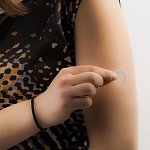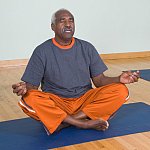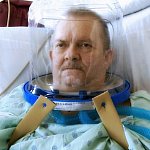High blood pressure, or hypertension, affects 1 in 3 American adults. In a large clinical study, researchers found that seniors who aimed for a target systolic blood pressure level lower than commonly recommended (less than 120 mm Hg compared to 140 mm Hg) had a reduced risk of cardiovascular disease and death. The findings will help older adults with hypertension and their doctors make more informed decisions about blood pressure goals.
Diabetes is a disorder in the regulation and use of glucose. In type 1 diabetes, the body’s own immune system attacks and destroys pancreatic beta cells that make insulin. Researchers used pancreatic islet cell transplantation to successfully treated people with difficult cases of type 1 diabetes. The procedure and the use of antirejection drugs were associated with some side effects. Researchers continue to monitor participants to assess the experimental procedure.
Roughly half of the world’s population is at risk for malaria, despite improved prevention and control efforts. Researchers have been working to develop a vaccine that provides long-term, reliable protection from malaria. An experimental vaccine protected healthy adults from infection for more than a year after immunization. The vaccine is now being tested in larger trials.
Genetic testing can help identify people at risk for certain conditions. Scientists found that several genetic variations previously linked with hypertrophic cardiomyopathy (abnormally thick heart muscle) were harmless. The variants, which were much more common in black Americans than in white Americans, resulted in a higher misdiagnosis of black Americans. The findings highlight the importance of including diverse populations in genomic studies, and keeping health care professionals updated on new findings.
Age-related macular degeneration (AMD) is the leading cause of vision loss among older Americans. AMD often has few symptoms in its early stages, but causes loss of central vision in later stages. Researchers examined the 5-year outcomes of using the drugs Avastin and Lucentis to treat AMD. The results showed that almost half of the participants had 20/40 vision or better, confirming the long-term benefits of the therapy.
Most people experience low back pain at some point in their lives. Treatment choices include over-the-counter and prescription drugs, cold and hot compresses, exercise, and in some cases, surgery. Researchers found that mindfulness-based stress reduction and cognitive-behavioral therapy both alleviated chronic low back pain in adults. The results validate more treatment options for people with back pain to consider with their health care providers.
Acute respiratory distress syndrome (ARDS) is a life-threatening condition that occurs when fluid builds up in the lungs and blocks oxygen from entering the bloodstream. If a person doesn’t receive enough oxygen, the organs can’t function properly. Researchers compared noninvasive oxygen delivery methods—a helmet versus a face mask—for patients with ARDS. The trial was stopped early because the helmets proved more effective than the face masks for treating this condition.































.png)









No hay comentarios:
Publicar un comentario